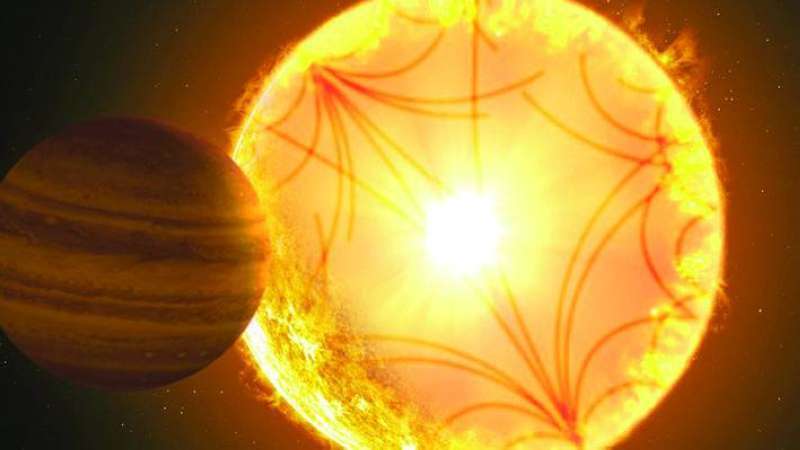Astronomers have discovered for the first time a distant planet that is dangerously close to its aging star, and according to a study published, the results gave an idea of the possible end of planet Earth.
Located 2,600 light-years from Earth, Kepler-1658b is an exoplanet roughly the size of Jupiter. But unlike this gas giant farther from the sun, Kepler-1658b orbits its star at only eighth of the distance similar to the distance between the Sun and Mercury, reports a local Arabic daily.
The study, published by The Astrophysical Journal Letters, indicated that this “hot Jupiter” orbits its star in less than three days, and this rotation period shrinks by about 131 milliseconds per year.
“At this rate, the planet will collide with its star in less than three million years,” said lead author Shreyas Visapragada of the Harvard-Smithsonian Center for Astrophysics.
“This is the first time that we have observed direct evidence of a planet moving in a spiral path around its aging star,” the astrophysicist told AFP.
A local Arabic daily said, the star in question is in an advanced stage of its cycle, when it begins to swell and become brighter.
Kepler-1658b’s orbit is relentlessly contracting under the influence of gravity exerted by the star, similar to the gravity exerted by the Moon on various points on Earth.
This effect called tidal force can attract two bodies just as it can move them away from each other, for example the moon is moving very slowly away from the earth in a spiral path.
“The death of a planet due to a star is a fate that awaits many worlds and could cause Earth’s final farewell after billions of years as it continues to orbit the sun,” the Astrophysics Center wrote in a statement.
By five billion years, the sun will become a “red giant” that will grow exponentially, similar to the host star of Kepler-1658b.
Like this exoplanet, the Earth can draw inexorably closer to the sun under the influence of tidal forces. But this effect can also be offset by the loss of mass from the Sun, according to Shreyas Visapragadhan, who stresses that “the final fate of the Earth is still unclear.”

